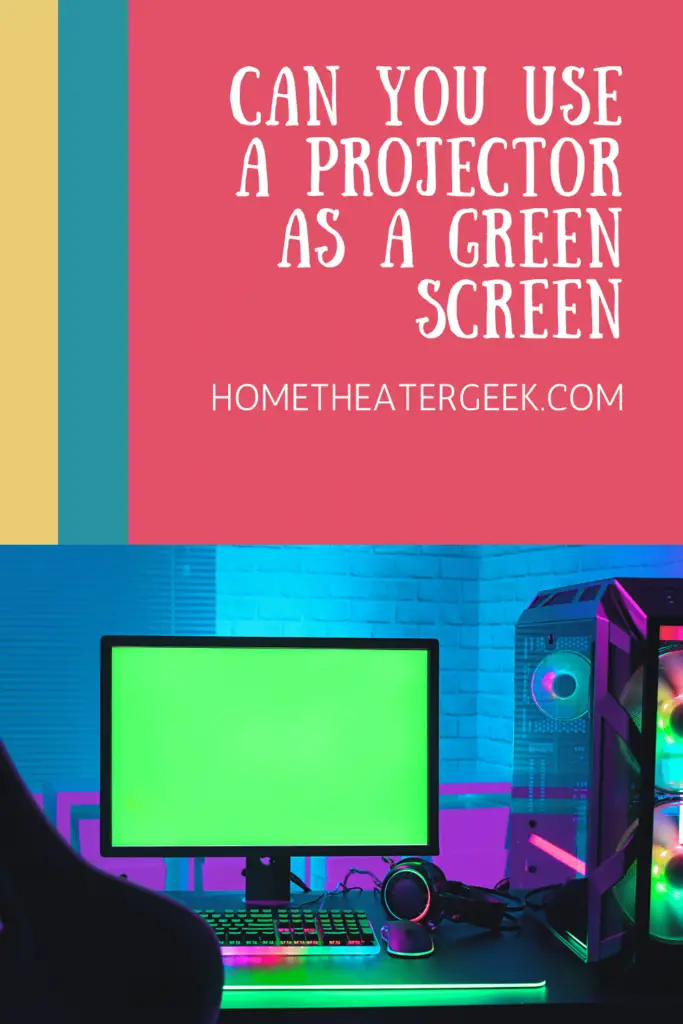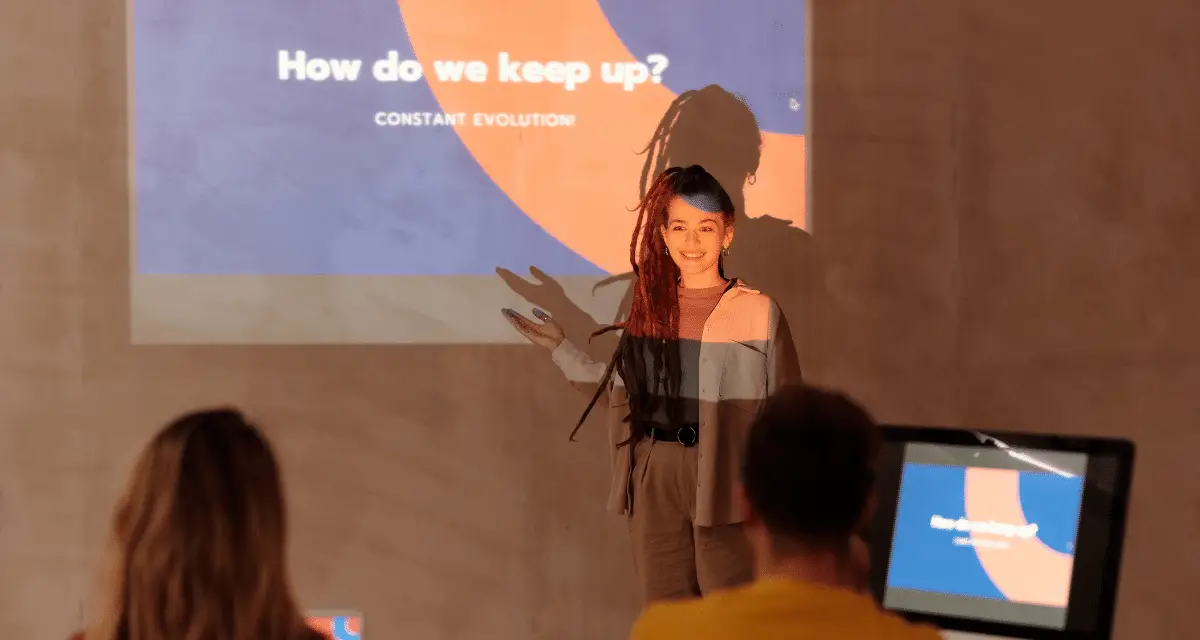We hope you love the products we recommend! Just so you know, we may collect a share of sales or other compensation from the links on this page. Thank you if you use our links, we really appreciate it!
When you think about using a projector as a green screen, the first thing that comes to mind is probably school projects. But projectors can be used for so much more than just homework assignments, we’ll explore some of the different ways can you use a projector as a green screen.
Whether you’re looking to create an at-home movie studio or want to add some special effects to your home videos, a projector can be a great tool for getting the job done.

Table of Contents
How To Choose The Right Projector as a green screen For Your Needs?
A green screen is a type of background used in video production. The green screen effect is achieved by filming against a green backdrop, which can then be replaced with another image or video clip. This technique is often used in news broadcasts, weather reports, and movies. Green screening technology has made it possible for amateurs to create professional-looking videos.
Green screens are a common sight in television and film production, but they can also be a valuable tool for business presentations and other events. If you’re considering using a green screen, there are a few things you’ll need to take into account in order to choose the right projector for your needs.
The first is the size of the screen. If you’re planning on using a standard computer monitor or television, you’ll need a projector that can project an image at least as large as the screen.
However, if you’re using a larger display, such as a stage or movie screen, you’ll need a projector that can produce a larger image. Another important consideration is the level of contrast between the green screen and the foreground image. If the contrast is too low, the green screen will be visible in the final image.
Finally, you’ll need to consider the brightness of the projector. A brighter projector will be more visible in a well-lit room, while a dimmer projector will be better suited to a dark room. By taking these factors into account, you can be sure to choose the right projector for your green screen needs.
How do you make a projector work as a green screen?
A green screen is a special effects / post-production technique for compositing (layering) two images or video streams together based on color hues (chroma range). The technique has been used in many fields to remove a background from the subject of a photo or video – particularly when the desired background is not present in the shot – or to choose between multiple background options as in virtual reality or augmented reality.
All you need is a green screen, a digital camera, and some basic editing software. Once you’ve filmed your footage, you can use the software to superimpose it onto any number of backgrounds – from a tropical beach to the surface of the moon! Whether you’re looking to add a bit of excitement to your home movies or you’re hoping to create the next Hollywood blockbuster, green screening is a great way to add some pizzazz to your videos.
In filmmaking, the green screen effect is often accomplished through chroma key compositing, which involves filming an actor in front of a solid color background and then digitally removing that background during post-production.
In order to make a projector work as a green screen, you need to film the actor in front of a green backdrop and then use chroma key software to remove the green during post-production. This will allow you to superimpose the actor onto another background of your choice.
Other methods to use projector as a green screen
In addition to using a projector screen as a green screen, there are a few other methods you can use to create a similar effect. One popular method is to use a piece of fabric or cloth as your green screen. This can be hung in front of the projector and will provide a surface for the projector to project onto. Another option is to use a wall or piece of furniture as your green screen. This can be done by painting the surface green or by using green fabric to cover the surface.
Either way, you will need to make sure that the surface is large enough to completely cover the projector’s image. Finally, you can also use a computer monitor as your green screen. This can be done by setting the monitor to a green background color or by using a green screen filter. Whichever method you choose, you will need to make sure that the green screen is flat and evenly lit so that the projector can properly key out the green color.
Some best projectors that can be used as a green screen is:
| Image | Product | Feature | Price |
|---|---|---|---|
|
Editor Choice
 |
Optoma UHD50X projector
|
|
Check Price |
|
TOP Pick
 |
BenQ HT3550 4K Home Theater Projector
|
|
Check Price |
|
Trending
 |
LG HU810PW 4K UHD Projector
|
|
Check Price |
The Benefits of Using as a green screen
As a photographer, you know that a green screen can be a powerful tool in your arsenal. But what are the benefits of using a green screen? Let’s take a look at some of the top reasons to use a green screen.
You Can Change the Background Easily
One of the biggest advantages of using a green screen is that you can easily change the background. This is perfect if you want to create a specific mood or setting for your photos. For example, if you’re shooting a fashion photo, you might want to use a green screen to change the background to a cityscape or beach.
It’s Perfect for Special Effects
Another great benefit of using a green screen is that it’s perfect for creating special effects. If you want to add some pizzazz to your photos, a green screen can help you do that. You can use it to create double exposures, levitation effects, and much more.
It’s Easy to Use
If you’re new to photography, you’ll be happy to know that green screens are actually quite easy to use. You don’t need any fancy equipment or software to get started. All you need is a green screen and a computer or smartphone with a camera.
It’s Affordable
Green screens are also very affordable. You can find them at most camera stores or online retailers. They’re also relatively easy to set up, so you won’t have to spend a lot of time or money getting started.
You Can Use It for Video, Too
In addition to photos, you can also use a green screen for video. This is perfect if you want to create a professional-looking video without spending a lot of money. All you need is a green screen and a video camera.
As you can see, there are many benefits of using a green screen. If you’re looking for a way to add some excitement to your photography, consider using a green screen.
Conclusion
While it is not recommended to use a projector as your only green screen solution, it can be used as an effective tool in certain circumstances. If you are looking for an affordable and easy way to achieve a green screen effect, using a projector can be a great option. Just make sure that you take into account the limitations of this approach and plan accordingly.

